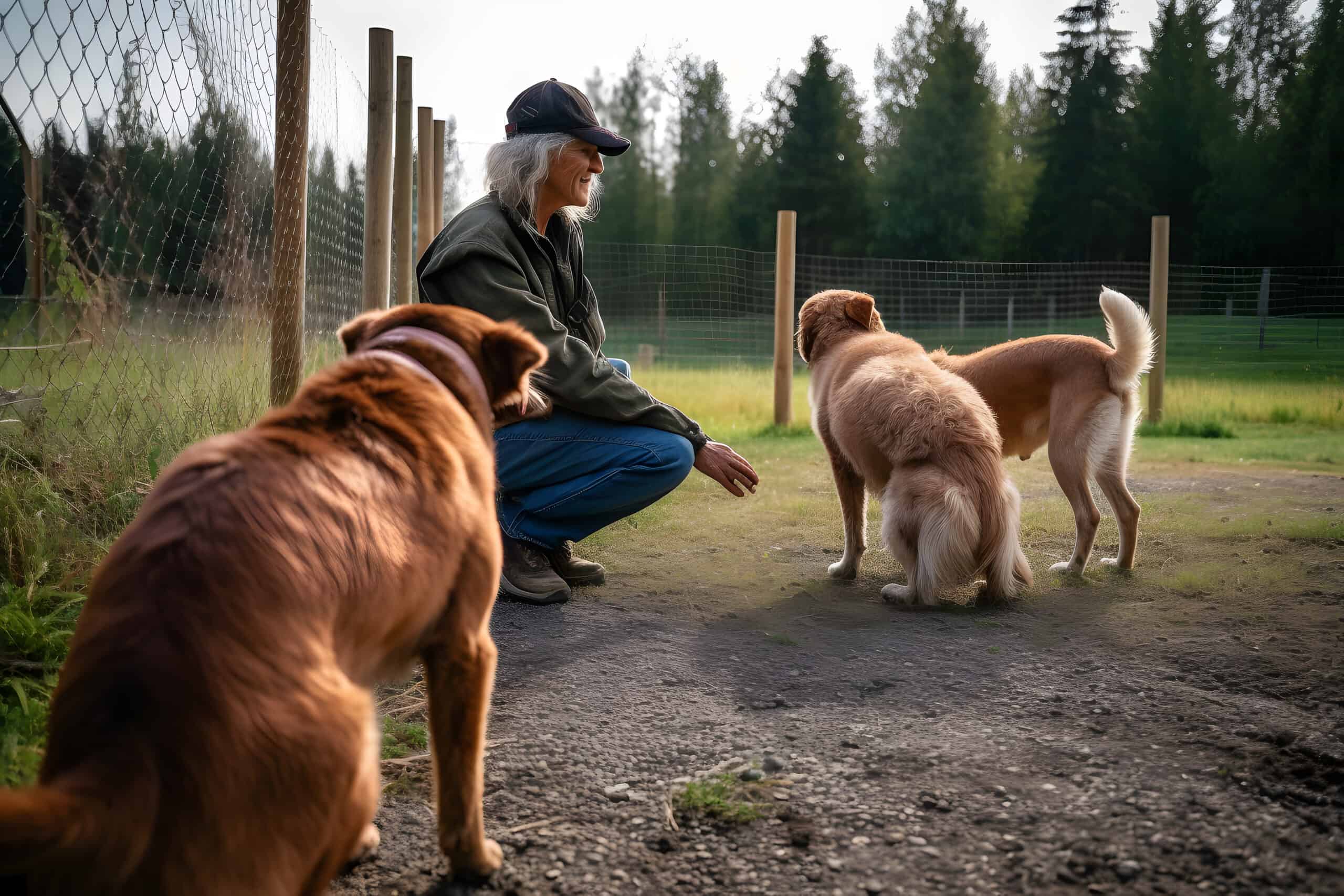Living with a dog can be a constant source of joy and unconditional love. But let’s be honest, sometimes that wagging tail turns into chewed furniture, and those playful barks morph into earsplitting howls. Dog behavioral problems can leave even the most devoted owner feeling overwhelmed.
That said, this guide is here to be your pawsitive reinforcement. It’ll equip you with proven strategies to tackle common issues like excessive barking, leash-pulling, and destructive chewing. With clear explanations and actionable tips, you’ll be well on your way to creating a happy, well-behaved furry friend.
1. Understand the Root Cause
The first step in addressing any behavioral issue in your dog is to understand the underlying cause. Dog behavior problems can stem from various sources, such as fear, anxiety, boredom, lack of socialization, or insufficient training. By observing your dog’s behavior closely and keeping a journal of when and where issues arise, you can begin to identify patterns and potential triggers. Understanding the root cause will enable you or a dog trainer to customize the training approach, effectively addressing the specific dog behavior issues during a dog training session.
2. Consistent Training
Consistency is critical when it comes to training your dog. Dogs learn best when commands and responses are consistent and predictable. Use the same verbal cues and hand signals each time you train your dog and ensure that everyone in the household follows the same rules and training methods. Consistency helps your dog understand what is expected and reduces confusion. Over time, your dog will learn to associate the command with the desired action.
3. Positive Reinforcement
Positive reinforcement training is a top-notch way to teach your furry friend. It works by rewarding them for the behaviors you want to see, making them more likely to do those things again. The key is finding what makes your dog tick – yummy treats, enthusiastic praise, or a fun game of fetch. This positive feedback creates a clear link in your dog’s mind: desired behavior equals awesome reward!
4. Exercise and Mental Stimulation
Ensuring that your dog receives adequate physical exercise and mental stimulation is crucial for their overall well-being and can help prevent many behavioral issues. Dogs with pent-up energy are more likely to engage in common dog behavior issues, such as chewing or excessive barking. Regular walks, play sessions, and activities like fetch or agility training can help burn off excess energy.
5. Socialization
Proper socialization is essential for preventing fear and aggression in dogs. From a young age, expose your dog to a variety of environments, people, and other animals controlled and positively. This helps your dog become accustomed to different situations and reduces the likelihood of fear-based reactions. Socialization should be a gradual process, starting with less challenging environments and slowly introducing more complex situations as your dog becomes more comfortable.
6. Avoid Punishment
Using physical punishment or harsh corrections can be counterproductive and may lead to increased fear, anxiety, and aggression in your dog. Instead of punishing unwanted dog behavior, focus on positive reinforcement and redirection. This approach helps your dog learn what behaviors are acceptable without creating negative associations. Building a trusting relationship with your dog through positive interactions will lead to more effective training outcomes.
7. Create a Routine
Dogs thrive on routine and structure, which provide a sense of security and predictability. Establish a daily schedule for feeding, walking, playtime, and training sessions. Consistent routines help your dog understand what to expect and reduce anxiety. A structured routine also allows you to incorporate training and socialization activities regularly, further reinforcing positive behaviors.
8. Professional Help
If your dog’s behavioral issues are severe or persistent, it may be beneficial to seek help from a professional dog trainer or a veterinary behaviorist. These experts can provide a comprehensive assessment of your dog’s behavior and develop a tailored training plan to address specific issues. Professional trainers can also offer guidance on advanced training techniques and help you implement strategies effectively.
9. Patience and Persistence
Behavioral changes take time and effort, so it’s important to be patient and persistent with your training efforts. Consistent training, positive reinforcement, and regular practice are essential for helping your dog learn new behaviors and break old habits. Celebrate small victories along the way and understand that setbacks are normal. Maintaining a positive attitude and staying committed to the training process will ultimately lead to long-term success. Remember that each dog is unique, and progress may vary, so adjust your approach as needed based on your dog’s individual needs.
10. Use of Calming Aids
For dogs that experience anxiety or stress, calming aids can be beneficial in managing their aggressive behaviors. Products such as anxiety wraps, pheromone diffusers, and natural supplements can help reduce anxiety and create a calming environment. In addition, natural supplements, such as those containing ingredients like chamomile or valerian root, can also promote relaxation. Consult with your veterinarian to determine the best calming aid for your dog’s specific needs.
Conclusion
Don’t let bad behavior turn your furry friend into a furry foe. With the knowledge and techniques gained from this guide, you’re well-equipped to tackle those unwanted behaviors. Remember, a happy and well-adjusted dog makes for a happier you. So, put these tips into practice, cultivate a positive training environment, and watch your relationship with your canine companion blossom!


